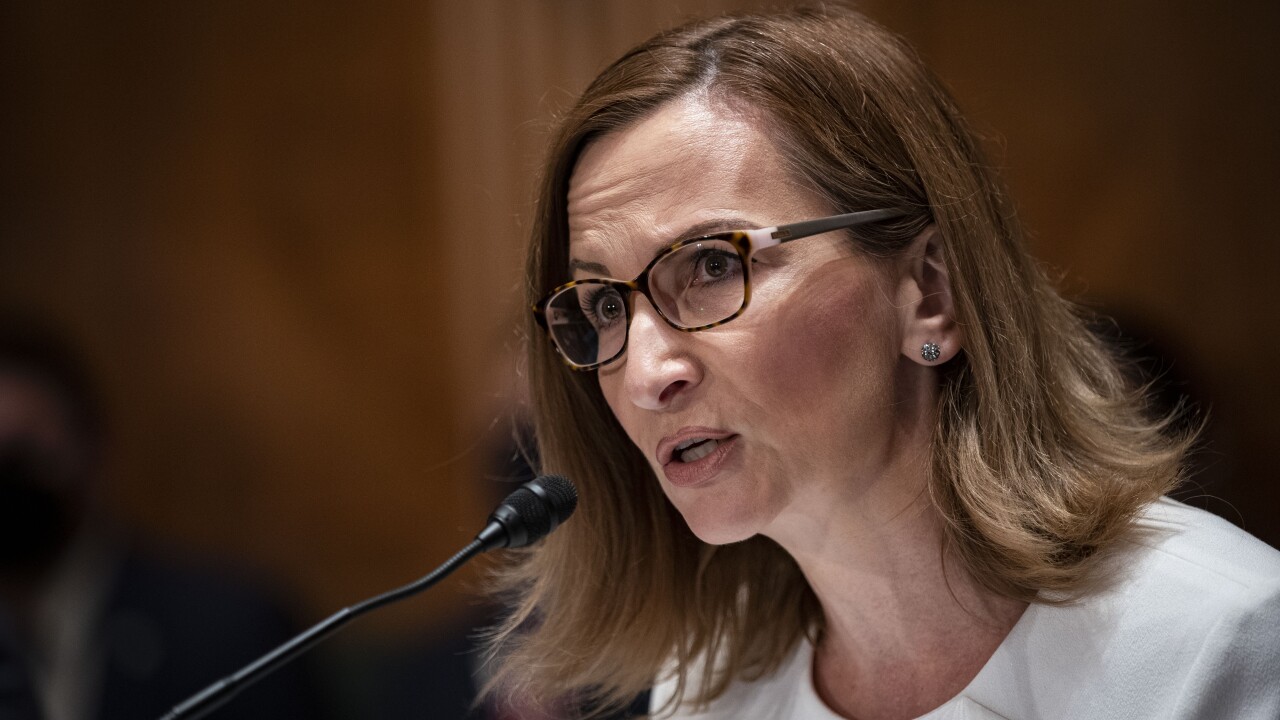Despite years of advance notice, many banks' automated teller machines will still be using International Business Machines Corp.'s outdated OS/2 operating system when IBM stops offering free support for the system next year.
Though the industry has been mandated to update every ATM this year to support a new encryption standard, banks do not have to stop using OS/2.
Microsoft Corp.'s Windows operating system is the most common upgrade from OS/2, and installing it offers some advantages. But bankers say they are slight and do not outweigh the cost of upgrading.
Instead, some companies seem to feel that if their ATMs are not broken, there is little reason to drop OS/2. Also, shifting to Microsoft Corp.'s Windows system may present security issues, bankers say.
Naugatuck Savings Bank in Connecticut has replaced two of its 14 ATMs with Diebold Inc.'s high-end Opteva machines, which run on Windows. The rest, which use OS/2, will remain in place for the foreseeable future, said Roy A. Balkus, the vice president of technology for Naugatuck.
Mr. Balkus said in an interview Wednesday that switching from OS/2 would provide "a few features that would be beneficial to me," such as using the ATMs for marketing efforts.
"But as long as … [the OS/2 ATMs are] working and they're dispensing cash, and they don't go out of service, I'm not going to touch them unless I have to," he said.
"There's not a huge difference between what an OS/2 machine will give a customer and what a Windows machine will give a customer," Mr. Balkus said. "The customers want their cash, 99% of the time. They don't care whether it's OS/2 or Windows."
Steven Eisenstadt, a spokesman for IBM, said the Armonk, N.Y., technology giant will not abandon customers that continue to use OS/2, but it will charge a fee for support after Dec. 31, 2006.
Larry J. Turner, the chief information officer for First Bank Richmond in Indiana, said it has no plans to convert its nine OS/2 machines to Windows, because it has a "substantial investment" in them. The brand-new OS/2 machine it recently put in a new branch "would be a difficult ATM to replace."
However, he conceded that even though converting to Windows is "not on our table" at the moment, "as the CIO, I'm going to eventually have to look at the conversion process, and Windows is where I'd probably look to be going."
Phoenix Interactive Design Inc., a London, Ontario, company that installs software in ATMs, has been upgrading a portion of U.S. Bancorp's fleet from OS/2 to Windows for a couple of years. Kyle MacDonald, the chief executive officer of Phoenix Interactive, said some of the reasons banks are reluctant to upgrade are the uncertainty that comes with change and increased concerns about security.
"Larger financial institutions have the resources to understand those risks and mitigate them," she said. "A lot of smaller banks don't have those resources. They're running a little more lean in the IT area. Many of the banks that we speak with feel very comfortable with the old software. There's some comfort that they know that it works. It's very secure."
Patty Henneke, the ATM banking manager for U.S. Bank, said the Minneapolis banking company is committed to eventually moving its entire fleet to Windows but is still far from that goal; the majority of its 4,877 machines still use OS/2.
U.S. Bank is evaluating each machine separately, she said. "We looked at every ATM and made a decision of what's the best thing at this ATM."
Sometimes the machines are too old to upgrade, and it makes sense to eventually replace them, but in other situations, "especially in the off-premise, the merchants we're working with want a simple cash dispenser," Ms. Henneke said. "They don't have any requirements for any additional marketing," so there is little reason to upgrade to Windows.
Ken Justice, the vice president of product marketing and management for Diebold, of North Canton, Ohio, estimated that half of all ATMs operated by financial institutions still use OS/2.
Windows adoption has been slow but steady since IBM said it would phase out OS/2, but IBM's cutoff date for free support will probably come and go without much concern on the part of many banks and ATM companies, he said.
"Even though IBM is withdrawing its support for OS/2, our support of our OS/2 applications really isn't tied to that date. We're going to continue to support those applications for a few years," Mr. Justice said.
It will be another three years before OS/2 is "virtually gone" from ATMs, he predicted.
Stephen L. Risto, the director of the Aptra software center of expertise for the Dayton, Ohio, ATM maker NCR Corp., agreed that "the overall Windows uptake from OS/2 over a period of years hasn't been at the pace that we originally expected."
Security can be a major sticking point in the conversion process. ATMs that run on Windows use the same technology as personal computers, so they are theoretically "vulnerable to the same kinds of threats," he said.
"What was sufficient security in the past when we were on propriety environment is not true today, and yes, it is certainly a concern that we are very vigilant about," Mr. Risto said. Vendors are "hardening the firewalls in order to be fully protected in the Windows environment."
Mr. Balkus said one of the reasons he prefers to stick with OS/2 is the temporary ATM shutdowns in 2003 at a handful of banking companies, including Bank of America Corp., as a result of digital worms, which are similar to computer viruses.
OS/2 "doesn't have the same kind of vulnerabilities that a Windows machine does," he said. "It's not necessarily a better operating system, but nobody" writes viruses or worms that attack OS/2.





